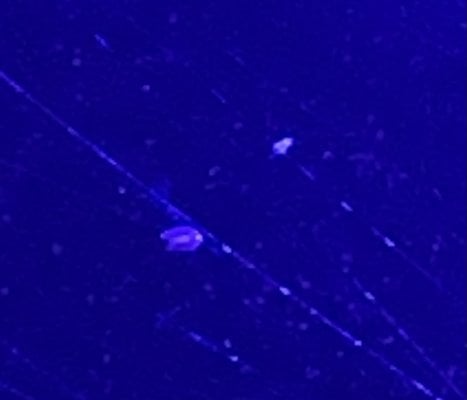- Joined
- Feb 8, 2016
- Messages
- 202
- Reaction score
- 101
So, this is an ongoing process and what I have done so far. Purely Information for others. Maybe help for me.
I started a new 240g roughly 300 total volume and easy math. This was January.
I put some corals in March and dipped In fresh water since I saw flatworms on them. I’m pretty rash and it was a bit late. I dip instead of quarantine but this was an oversight.
Believe it or not I had flatworms in April. I’ve never had flatworms. I have seen them take over though. So I wasn’t sure how many there were but i was playing it safe based on the horror stories of the toxins. But I’m reality I had very few where you could only see them
On certain areas of the glass
I did some reading and bought a thing of flatworm exit and carbon. I have a high flow rate media reactor that runs like 300gph if I wanted through it (I think that’s a lot). I did my research and put in my single bottle of FE (300g). Waited about 5 min (watching the little guys squirm) and turned the carbon on.
some died. But there was a good bit the next day. I did some Research on their life cycle. 28 days till maturity and egg laying. Lifespan about the same. 4-6 weeks.
So the FE did work as it was reduced. So I bought 4 more bottles as I had read people do multiple treatments.
two weeks later I run the similar setup. New carbon ready to go at the flip of a switch. I put in two full bottles (online you can use 10x and never saw any negative effects to coral etc). I waited about 20min and turned the carbon on for a couple days.
Next days there were still some Flatworms but very very few.
so I waited another two weeks. For eggs to hatch etc. and did another bottle. This time I turned the carbon off. And didn’t put it on. Just let the bottle do it’s thing figuring the toxins would be so minimal.
a few days later I caught a glimpse of a freaking flatworm. So I’m like. I guess there was some eggs etc.
So today I added another full bottle. Carbon off. And I will see what happens.
dosing currently.
Day 0 - 1 bottle FE - 5min then carbon
Day 14 - 2 bottles 20 min then carbon
Day 28- 1 bottle no carbon
Day 40 - 1 bottle no carbon
does anyone have similar experience or advice for these guys.
My friend, who is the most meticulous person ever and bleached everything in his tank before setting up and hasn’t added anything to it that wasnt quarantined. Just started seeing some. The only thing we did in common was caribe sea special grade live sand… but I can’t imagine that’s it.

I started a new 240g roughly 300 total volume and easy math. This was January.
I put some corals in March and dipped In fresh water since I saw flatworms on them. I’m pretty rash and it was a bit late. I dip instead of quarantine but this was an oversight.
Believe it or not I had flatworms in April. I’ve never had flatworms. I have seen them take over though. So I wasn’t sure how many there were but i was playing it safe based on the horror stories of the toxins. But I’m reality I had very few where you could only see them
On certain areas of the glass
I did some reading and bought a thing of flatworm exit and carbon. I have a high flow rate media reactor that runs like 300gph if I wanted through it (I think that’s a lot). I did my research and put in my single bottle of FE (300g). Waited about 5 min (watching the little guys squirm) and turned the carbon on.
some died. But there was a good bit the next day. I did some Research on their life cycle. 28 days till maturity and egg laying. Lifespan about the same. 4-6 weeks.
So the FE did work as it was reduced. So I bought 4 more bottles as I had read people do multiple treatments.
two weeks later I run the similar setup. New carbon ready to go at the flip of a switch. I put in two full bottles (online you can use 10x and never saw any negative effects to coral etc). I waited about 20min and turned the carbon on for a couple days.
Next days there were still some Flatworms but very very few.
so I waited another two weeks. For eggs to hatch etc. and did another bottle. This time I turned the carbon off. And didn’t put it on. Just let the bottle do it’s thing figuring the toxins would be so minimal.
a few days later I caught a glimpse of a freaking flatworm. So I’m like. I guess there was some eggs etc.
So today I added another full bottle. Carbon off. And I will see what happens.
dosing currently.
Day 0 - 1 bottle FE - 5min then carbon
Day 14 - 2 bottles 20 min then carbon
Day 28- 1 bottle no carbon
Day 40 - 1 bottle no carbon
does anyone have similar experience or advice for these guys.
My friend, who is the most meticulous person ever and bleached everything in his tank before setting up and hasn’t added anything to it that wasnt quarantined. Just started seeing some. The only thing we did in common was caribe sea special grade live sand… but I can’t imagine that’s it.















